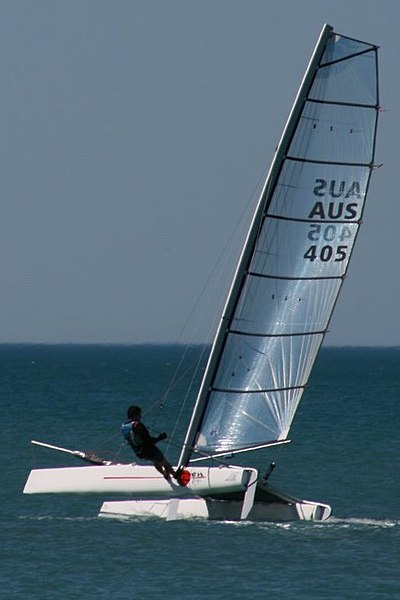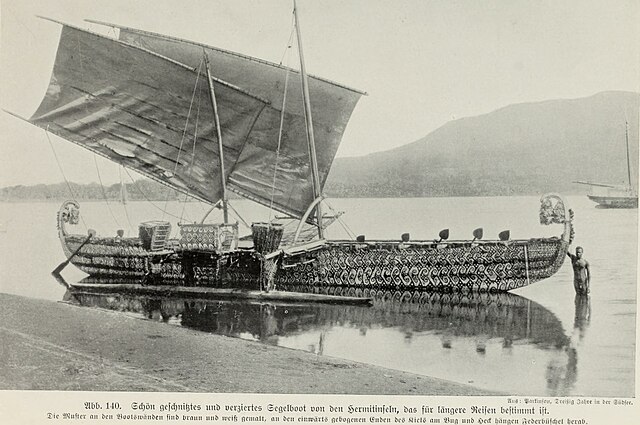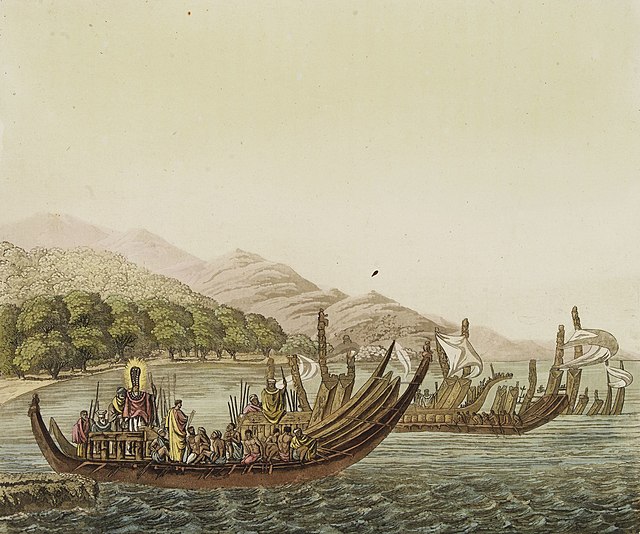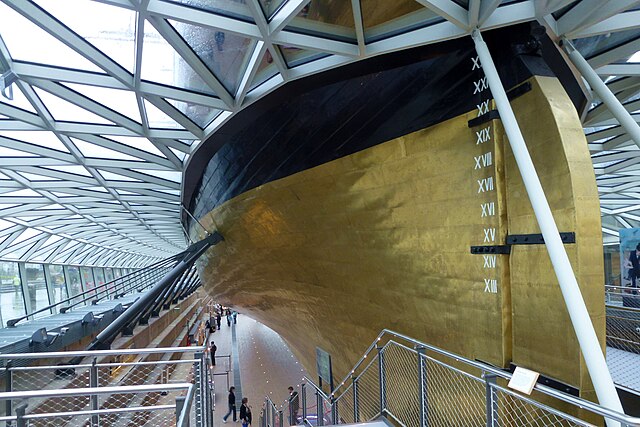A catamaran is a watercraft with two parallel hulls of equal size. The distance between a catamaran's hulls imparts resistance to rolling and overturning. Catamarans typically have less hull volume, smaller displacement, and shallower draft (draught) than monohulls of comparable length. The two hulls combined also often have a smaller hydrodynamic resistance than comparable monohulls, requiring less propulsive power from either sails or motors. The catamaran's wider stance on the water can reduce both heeling and wave-induced motion, as compared with a monohull, and can give reduced wakes.
A Formula 16 beachable catamaran
Powered catamaran passenger ferry at Salem, Massachusetts, United States
A carved and painted voyaging catamaran with tanja sails of the Micronesian inhabitants of Hermit Islands, Bismarck Archipelago (c. 1914)
1827 depiction of Tahitian pahi war-canoes
The draft or draught of a ship is a determined depth of the vessel below the waterline, measured vertically to its hull's lowest—its propellers, or keel, or other reference point. Draft varies according to the loaded condition of the ship. A deeper draft means the ship will have greater vertical depth below the waterline. Draft is used in under keel clearance calculations, where the draft is calculated with the available dept of water to ensure the ship can navigate safely, without grounding. Navigators can determine their draught by calculation or by visual observation.
Draft markings on the stern of the Cutty Sark, an example of the Imperial system of such markings.
Draft marks on a ship's bow
Load line mark and draft marks on the side of a ship







